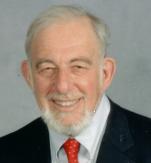
The below message from Eric Radin, MD in Follow-up to the posting on Equity in Healthcare:
Equality in Health Care Delivery (HCD), in a cost-conscious system, has to have its limits. Assuming no ethnic, racial or gender inequality, these limits logically fall under 3 categories:
Geographical: Providing specialist and super-specialist care in sparsely populated areas is impractical and economically wasteful. The solution is providing transportation and medivac for patients who require more than primary or secondary care.*
Socio-economic status: Allowing every conceivable test and fishing expedition in insured patients is wasteful. The solution is to practice evidence based-medicine, insurance-premium related rationing (if we are to control costs) and education of the public that providing everything for everybody will disenfranchise even more of us.
Quality: Geographical and individual practitioner quality of care has been demonstrated to be quite variable. The solution is universally compatible electronic medical records that can be audited, non-punative, focused further education for those who need it, and diagnosis-based provider credentialing.
* What is secondary level care- halfway between a primary care practitioner (PCP) and a Board-certified specialist? It is a PCP who has developed a special interest, has taken some courses, and developed significant experience is some facet of health care. Examples are joint disease, breathing problems, heart difficulties and skin lesions. The preponderance of the ambulatory patients seen in offices and clinics has common problems. It’s just that many PCP’s are not trained in common problems of all organ systems and of all age groups and don’t feel comfortable treating them. Consider internists and pediatricians as hospitalists, trained to take care of the very ill. A community of PCP’s, each with a different special interest, mutually consulting on each other’s patients who do not present with easily recognizable patterns of symptoms and signs, can easily treat a large proportion of patients now send long distances to specialists .



No comments:
Post a Comment